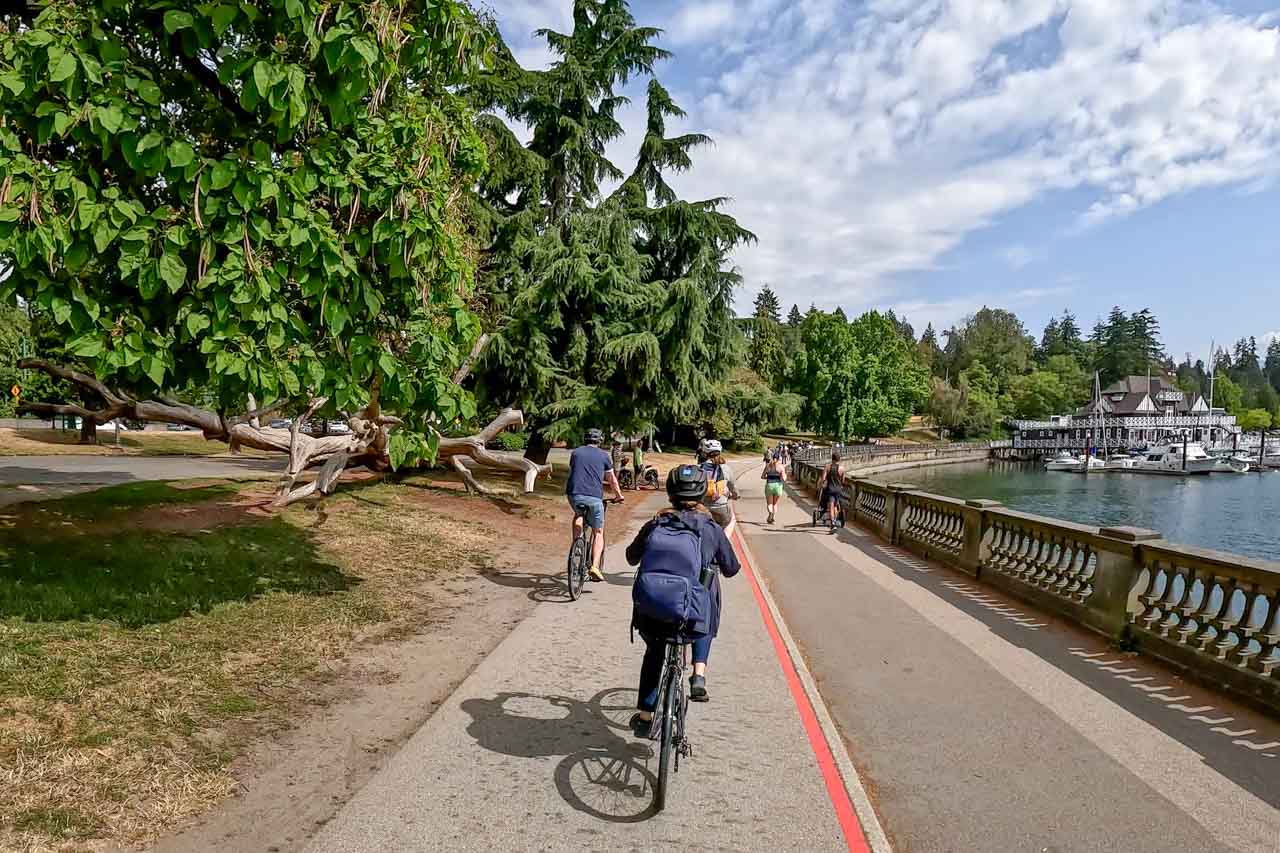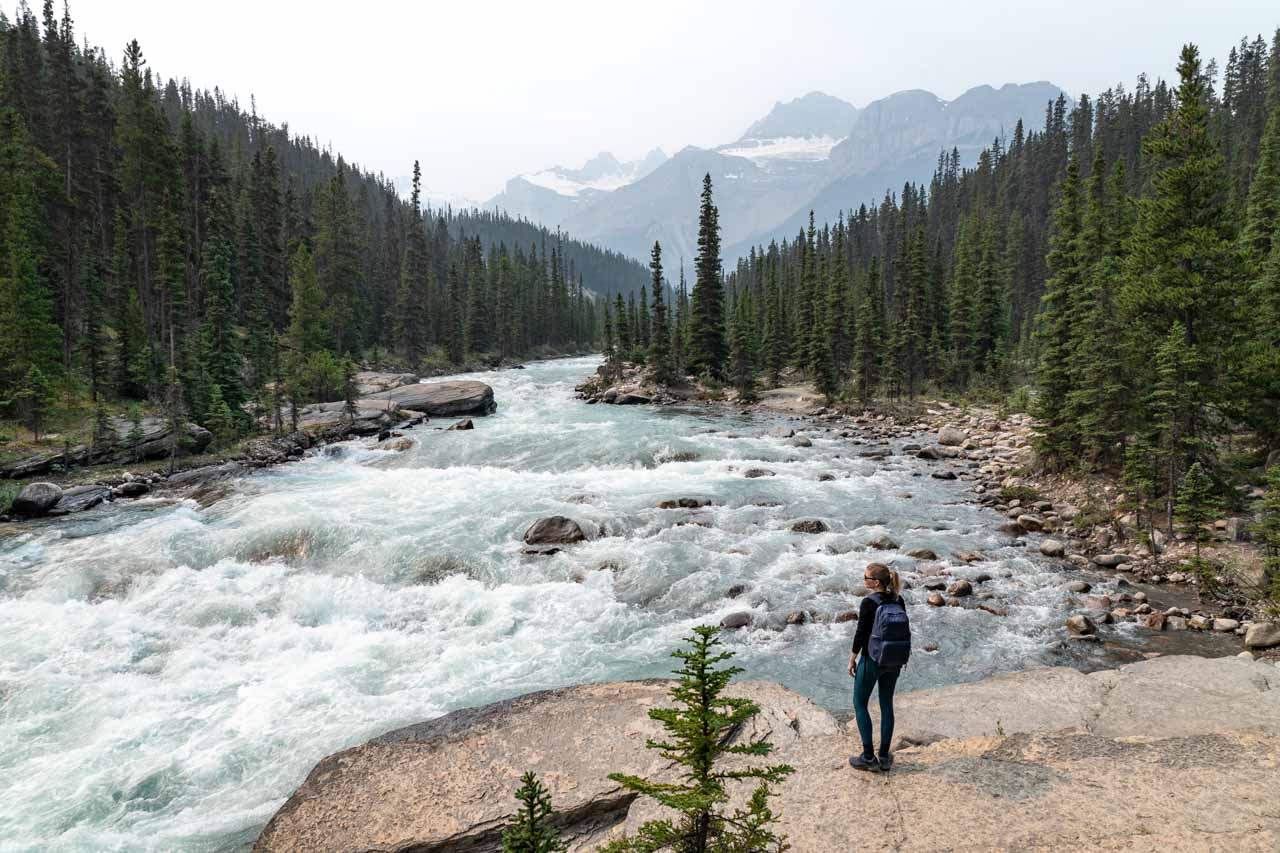Are you ready for the adventure of a lifetime in Canada’s captivating outdoors? Temperatures are warmer, the days are longer, and our comprehensive Canada packing list will ensure you’re prepared for exploring. With this guide, you’ll be well planned and ready to make the most of your Canadian summer getaway! I’ll even give you a peek inside my suitcase and provide a printable, all-gender checklist.
Full Disclosure: I may earn compensation for my endorsement, recommendation, testimonial, and/or link to any products or services from this website. I only recommend products/services that I use and love, therefore feel comfortable recommending.
Table of contents



General packing tips for the Canadian outdoors
Activities
Canada is a nature-lovers’ paradise! If you’re doing any activities such as rafting, glacier trekking, regular hiking or via ferrata, you will require freedom of movement. Reconsider any restrictive garments or anything you have to constantly adjust. Also, check with your outfitter or tour provider to confirm what they provide and what you need to wear or bring with you for any specific activity. Here are a few examples.
What to wear whitewater rafting
Outfitters will generally provide all the wetsuits, jackets and water booties you need for whitewater rafting in a cold climate. You won’t be able to carry anything with you on the raft. You belongings will need to be placed in a locker or your car. Wear a swimsuit and have a towel and dry change of clothes prepared for when you finish. A GoPro with a helmet mount and/or strap is the best option if you want to take your own camera, as you will need both hands. Lastly, a pair of sunglasses with a strap or retainer is best.
What to wear for via ferrata
Pack flexible, sports gear that allows a full range of movement, especially when it comes to raising your knees. At altitude you will experience cooler temperatures and stronger winds, so warm and waterproof layers are essential. You can take a small backpack or crossbody bag for essentials like sunscreen, extra layers, camera, water and snacks. Shoes should be proper hiking boots with ankle support. Some companies will rent boots as part of their service.
What to wear glacier hiking
Your outfitter will generally always provide microspikes to go on your hiking boots or athletic shoes. Other provisions vary between companies, so ensure you arrive as self-sufficient as possible. This means long pants, warm base and mid layers, plus a full top-to-bottom waterproof layer. A warm hat and gloves are also ideal. Even if it is a 30°C (86°F) or more day off the glacier, it get significantly colder once you are standing on the ice.
What to wear wildlife watching
If you want to spot wildlife, wearing more muted or neutral colours can be beneficial. I learnt this trick while in the Galapagos Islands. Animals are alerted when they see a colour that isn’t part of their normal environment, and they will be easily scared. If you want to get as close as it is safe to do so, try to blend with the natural surroundings.



Climate
Start preparing for your trip by referencing climate information for your destination. Climate represents general weather trends including typical temperature and precipitation for a particular time of year. For the purposes of this post, I’ve defined summer as July to September.
Once you get within a week of your trip, move to the weather forecast for more specific information. That way you can make any necessary tweaks to your packing.
Below are links to climate information for some of Canada’s most popular National Park destinations and nearby cities. Average climate data like this is helpful in planning what to pack for Canada in advance (more than a 10-days out).
Clothing and comfort
Canada’s weather can be highly variable, especially if you’re in the mountains or on the coastline. Due to these changeable conditions, you should wear clothing that is breathable, insulating and durable. They should also provide sun and rain protection.
To achieve this, you need lightweight, layers that allow you to adjust to the conditions. They should be made out of different fabrics that serve various functions. Here are three, key layers you need when packing for Canada:
- Base layers need to be moisture-wicking to allow sweat to move away from the body. Merino wool is a great fabric for cool-to-warm environments because of its breathability and moisture wicking properties. Meanwhile cotton is not so great.
- Middle layers are for added warmth when you need it. Polyester or nylon blend fabrics are lightweight and insulating. Polar fleece is a popular choice. Down is warm but less effective if it becomes wet because the feathers clump together. Therefore, if you have a down layer, ensure it is encased in a water-proof fabric.
- Outer layers need to be wind and rain proof. Rain pants are good to have on standby for putting on over your base layer in some locations. Rain-proof materials don’t breathe well, so you don’t want to be wearing them when you don’t have to.
Currency
The currency of Canada is the Canadian dollar (CAD). For international visitors, withdrawing local currency from an ATM on the ground can be the best option for getting a favourable exchange rate.
Canadian cities and towns are generally card-friendly but you may need cash in small bills to cover some instances, particularly if you’re travelling to more remote locations
Electronics
Electricity in Canada, is delivered at 120-V, 60-Hz (the same as the U.S.). Depending on where you’re travelling from and what kind of appliances you are bringing, you may need a voltage converter. Generally, modern phones, tablets and laptops are made for both 110-127V and 220-240V, but it is best to check. Canada uses Type A and B plugs and sockets, so you may also need an international adaptor.
Environment
Try to minimize packaging and disposables as much as possible throughout your travels, especially when visiting national parks and outdoor destinations – everything that goes in, has to be brought back out again! These guides will assist: 8 Essential Eco-Friendly Travel Products and 5 Steps to More Sustainable Travel.
Travel documents
International travellers must carry a passport that has at least 6-months validity. Entry requirements will depend on the country that issued your passport—check the official website here. You may require an eTA (electronic Travel Authorization) to enter by air. It only takes a few minutes to apply online, costs CAD7 and is valid for 5-years.
Don’t forget to pack copies of your travel reservations, details of your travel insurance, Covid-19 vaccination record and your Canada Parks Pass if you already have one.
Security
Keep your valuables to a minimum and don’t leave them in your car. Make use of the safe at your accommodation safe where possible. See this post for more, general travel security tips.


Canada packing list for summer in the outdoors
Clothing and accessories
Underwear and bras – Pack just a week’s worth and wash in the shower or bathroom sink if you are staying for longer.
Sleepwear – In summer, Canada experiences long daylight hours. For example, in Banff National Park, the longest day of the year is over 16-hours of sunlight. Therefore, a sleep mask is a must-have inclusion to your sleepwear.
Base layer – Moisture-wicking base layers are essential, especially if you are going to be active. During the shoulder seasons you need something heavier with a long sleeve. In high summer, July-September you likely only need a lightweight, short-sleeved base. From our experience, packing one long-sleeve option is good to have if you’re spending time at altitude, doing any ice climbing or glacier hiking.
Note: Canadian summers are fraught with mosquitos and black flies. So, despite the warmth, long sleeves in a light fabric are recommended.
Mid-layer – Pack a warm polar fleece or sweatshirt that will layer over the previous two items.
Pants – Pack a pair of light, quick-dry long pants or leggings, for every 2 days of your trip. I don’t recommend shorts because of the mosquitos. You may also need to scramble up rocks or wade through brush while you’re hiking. I chose leggings, with one pair of jeans for the evening.
Outerwear – Pack a rain shell or other waterproof outer layer. Rainwear also makes a good windbreaker if you need it.
Socks – Well cushioned socks are essential for keeping your feet warm, dry and blister-free. Again, I highly recommend Merino wool.
Shoes – You need a pair of comfortable walking shoes with good grip. If you have hiking boots, pack them! I recommend also packing a pair of closed-toe water shoes if you’re rafting or participating in other water activities. Take a nice clean pair of street shoes for evenings, as your hiking shoes will tend to get quite muddy or dusty.
Scarf, gloves and hast – Pack a scarf, a pair of gloves and warm hat. Don’t forget a wind-secure, sun hat for the middle of the day. Some tour operators provide gloves for particular activities. For hygiene reasons, you may like to take a thin pair of liners to wear inside them.
Swimsuit
Lightweight travel towel
Toiletries
Deodorant
Toothpaste and toothbrush
Shampoo and conditioner
Face and body wash
Moisturizer
Hair accessories (ties and pins)
Menstrual products
Light makeup and perfume for evenings if you desire.
Laundry soap – a cake of laundry soap is great for washing your smalls in the hotel basin and doesn’t add to your liquid/powder count if you’re travelling carry-on only.
Day bag
Camera – Camera with accessories such as charger, spare batteries; SD cards; and tripod. A waterproof camera or GoPro is also ideal for some activities.
Phone – Phone including accessories such as a charger. An additional power pack for charging on the go is a must if you are using your phone as your camera.
International adaptor – Where required for international visitors.
Refillable water bottle – Some communities in Alaska do not have recycling services, so a refillable water is a great way to minimize single-use plastic consumption.
First aid kit – A basic first aid kit that you can take out hiking.
Sun hat
Sunglasses – It’s best to pack UV-rated sunglasses to protect your eyes, with polarized lenses that cut glare when spending time near water, ice and snow. Don’t forget a strap like Croakies or Chums so you don’t lose them off the side of a mountain or boat.
Hand sanitizer and mask
Headphones
Medications and prescriptions
Sunscreen and lip balm with SPF 30+ or higher
Insect repellant
Maps
Headlamp or flashlight
Pharmaceuticals and prescriptions
Dry bag for water activities
Binoculars
Miscellaneous
Book
Sketch pad and pencils/paint
Notebook/diary
Tablet device
Playing cards or travel game
What’s in my suitcase Canada this summer?
Below are the key items I packed for our Canadian road trip from Calgary to Vancouver—get our full itinerary here.
Smartwool Ultralite V-Neck – This Merino wool blend tee is great for layering or wearing on its own.
Kathmandu long sleeve base layer (13 years old and no longer for sale) – The current equivalent would be this Smartwool one.
Arc’teryx Kyanite Hoodie – A good summer-weight hoodie that is really compact but not particularly hard wearing. If you graze against something, the fabric pulls very easily which is disappointing for the price. I would choose differently next time.
Arc’teryx Beta rain jacket – A sturdy, Gore-tex, waterproof shell.
Levi’s 314 Shaping Straight – My most comfortable, go-to jeans. I wore these on the plane and in the evenings.
Coach sunglasses (regrettably not polarizing), with these sunglasses straps – great for keeping your glasses safe during your adventures.
Arc’Teryx Aerios FL 2 Gortex trail runners
Small belt bag (crossbody)
Smartwool Classic hiking socks
Brevitē Jumper Backpack – A stylish day pack that is perfect for photographers. There is also a non-camera version.
Solbari Resort Sun Hat – I like this hat for adventure travel because it has all the bells whistles you need to keep it on your head. Plus its washable!
Hint: Don’t forget to check out Patagonia’s Worn Wear resale platform for good condition, secondhand items.
I hope this Canada packing list streamlines your trip preparation – let me know if you have any feedback or additions in the comments below.
Peace, love & inspiring travel,
Madam ZoZo




